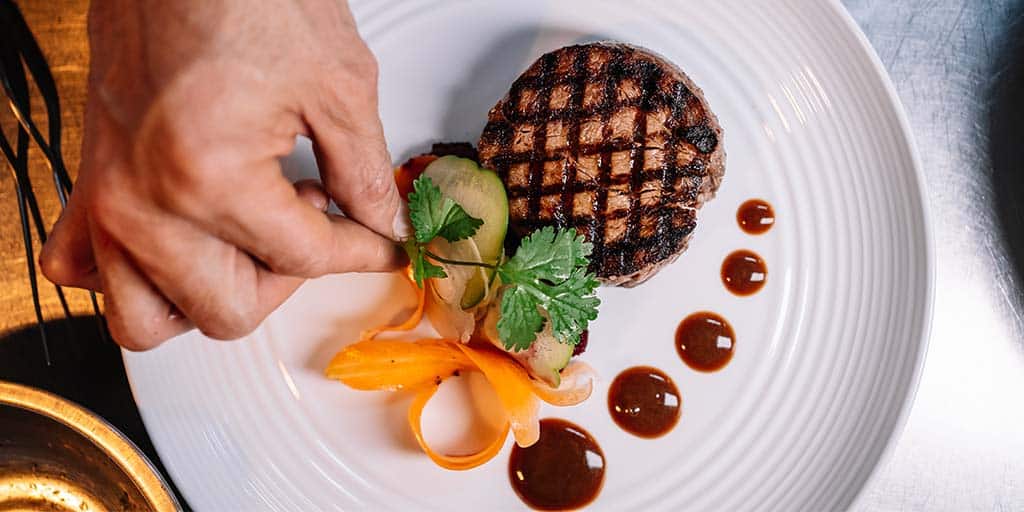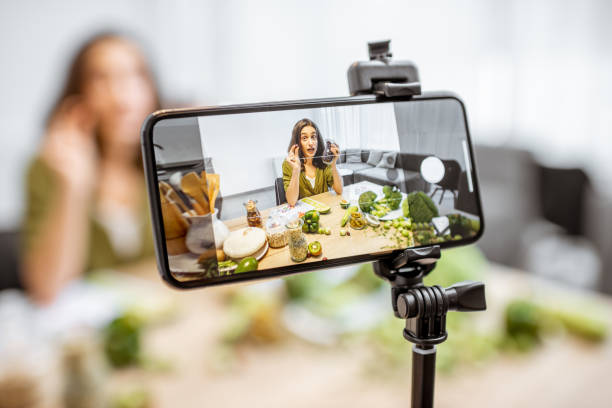In the world of food marketing, creating viral food content can catapult your brand to new heights. With creative campaigns and strategic planning, you can achieve unparalleled social reach and engagement. Let’s explore how to conceptualize and execute viral food content that leaves a lasting impression.
Why Viral Food Content Matters

- Increased Brand Visibility: Viral content spreads quickly, putting your brand in front of a vast audience.
- Boosted Engagement: Eye-catching food content generates likes, shares, and comments.
- Improved Customer Loyalty: Memorable campaigns foster a deeper connection with your audience.
Steps to Create Viral Food Content

1. Identify Your Target Audience
Understanding your audience is key to crafting relatable and shareable content. Consider:
- Demographics: Age, gender, location.
- Preferences: Food trends, dietary habits.
- Platform Behavior: Where they spend their time online (e.g., Instagram, TikTok, YouTube).
2. Brainstorm Creative Concepts
Generate unique ideas that align with your brand and resonate with your audience. Examples include:
- Food Challenges: Invent a fun, shareable challenge like “The Giant Burger Challenge.”
- Behind-the-Scenes Videos: Showcase your kitchen, staff, or food preparation process.
- Innovative Dishes: Highlight eye-catching and unexpected food creations.
3. Leverage Trends and Hashtags
Stay updated on food trends and viral hashtags to increase visibility. For example:
- Use trending hashtags like #FoodieFriday or #ViralEats.
- Create your own branded hashtag to encourage user-generated content.
4. Focus on Visual Appeal

Food content is inherently visual, so prioritize high-quality visuals:
- Lighting: Natural light enhances the appeal of food.
- Angles: Experiment with top-down or close-up shots to highlight textures.
- Editing: Use tools to enhance colors and details for an appetizing look.
5. Create Interactive Content
Engage your audience with interactive elements like:
- Polls and Quizzes: Ask followers to vote on their favorite dishes.
- Live Streams: Host live cooking demos or Q&A sessions.
- Contests: Encourage users to share their own food creations for a chance to win.
6. Collaborate with Influencers

Partnering with food influencers can amplify your campaign’s reach. Look for influencers who:
- Share your brand’s values.
- Have an engaged audience within your target market.
- Can create authentic and visually appealing content.
7. Optimize for Social Platforms
Tailor your content to fit the platform’s format:
- Instagram: Focus on reels, stories, and carousel posts.
- TikTok: Create short, catchy videos with trending audio.
- YouTube: Produce detailed recipe tutorials or behind-the-scenes vlogs.
8. Plan a Strategic Launch
Timing and coordination are critical for virality. Consider:
- Optimal Posting Times: Share content when your audience is most active.
- Teasers: Build anticipation with sneak peeks.
- Cross-Promotion: Share the content across all your social channels.
Measuring Success

Track key metrics to gauge the performance of your viral food content:
- Engagement Rate: Likes, comments, shares, and saves.
- Reach and Impressions: How many people saw your content.
- Website Traffic: Monitor referral traffic from your social platforms.
- User-Generated Content: Measure how many users create content inspired by your campaign.
Examples of Successful Viral Food Campaigns
- Starbucks’ Unicorn Frappuccino: This colorful, limited-edition drink took social media by storm.
- Chipotle’s TikTok Challenges: Encouraged users to create videos with their favorite Chipotle orders.
- Local Food Trucks: Leveraging Instagram reels to showcase unique menu items.
Common Mistakes to Avoid
- Overcomplicating Ideas: Keep concepts simple and relatable.
- Ignoring Analytics: Regularly monitor performance to refine your strategy.
- Lack of Authenticity: Ensure your content reflects your brand’s voice and values.
Read More:- Community-Centric Marketing for Cafe Owners
Conclusion
Creating viral food content is both an art and a science. By understanding your audience, embracing trends, and crafting visually appealing and interactive campaigns, you can achieve remarkable social reach. Start experimenting with creative ideas today and watch your brand go viral.
FAQ’s
Q1: How do I make my food content stand out?
Focus on high-quality visuals, innovative ideas, and authentic storytelling.
Q2: Which platform is best for viral food content?
Platforms like Instagram, TikTok, and YouTube are ideal for visually-driven food content.
Q3: How often should I post food content?
Consistency is key. Aim for at least 3-5 posts per week to maintain engagement.
Q4: Can small businesses create viral food content?
Absolutely! Creativity and authenticity matter more than budget.
Q5: What should I do if my content doesn’t go viral?
Analyze performance metrics, refine your approach, and keep experimenting.








